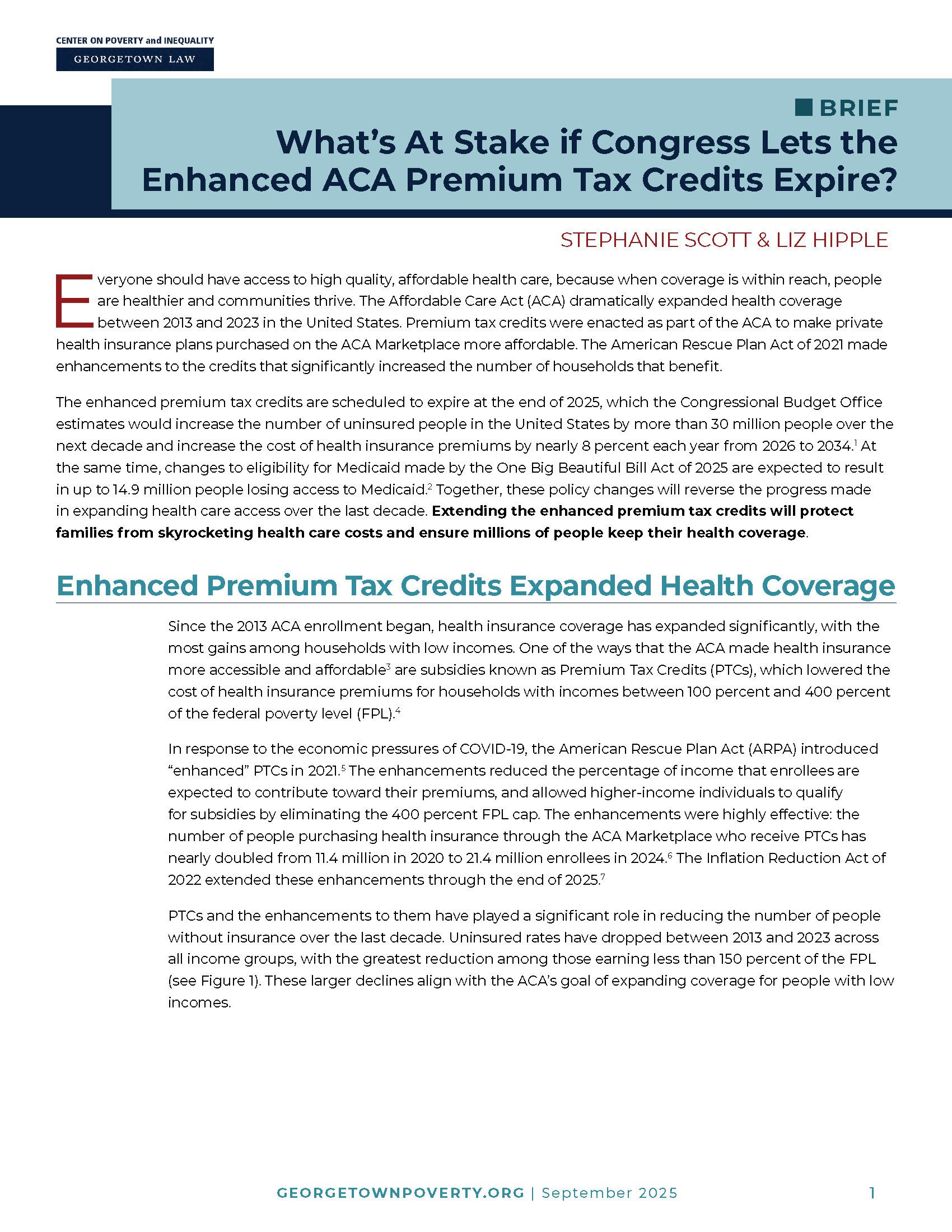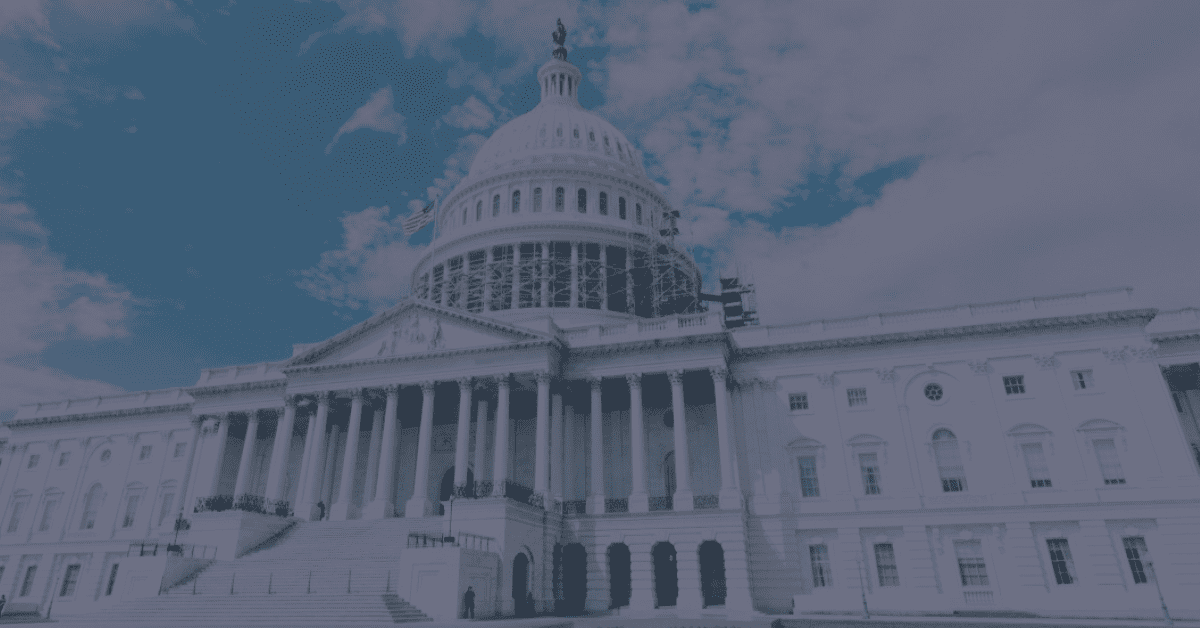PUBLIC BENEFITS
Accessible and inclusive public benefit programs are essential to strengthening communities and the country. We’re building the case for whole-family, community-centered approaches to food assistance, cash support, and social services.

Millions of Americans rely on public benefits to meet daily needs, yet outdated delivery systems and unnecessary barriers too often make accessing help a struggle. GCPI’s new People-Centered Digital Benefits Project highlights state innovations and the lessons they offer for creating modern benefit delivery systems that meet people’s needs. In this post, Visiting Fellow Andres Arguello previews the project, which will showcase proven models that are fast, fair, and dignified. We will make the successes visible and replicable, providing practical resources for policymakers, agency leaders, and practitioners.

As states move toward digital benefit systems, new opportunities arise, but so do new risks. In this post, Affiliate Scholar Jae June Lee examines the roots of the class differential in privacy, and raises broader concerns about the increasing surveillance that low-income families face—from invasive verification practices to expansive data-sharing systems. He explores why safeguards are critical to preventing a “digital welfare dystopia” and offers insights for practitioners to design and implement digital systems carefully.

Without action from Congress, subsidies that keep health insurance premiums affordable for millions will expire at the end of 2025. Expiration of the enhanced premium tax credits would push health care out of reach for millions, roll back progress toward health equity, and destabilize the health care system. Families with low incomes, particularly Black and Latinx families, and people at risk of losing Medicaid would be hit the hardest. This analysis highlights what’s at risk for families, health equity, and the broader health care system.

Women are working despite the odds, including unequal pay, unpredictable low-wage jobs, and few or no benefits. The recently passed reconciliation law—dubbed the “One Big Beautiful Bill Act” (OBBA) by its backers—adds harsh new work requirements to SNAP and Medicaid. The result? Millions of working women, mothers, single moms, and grandmothers could lose access to food assistance and health coverage—not because they don’t work hard enough, but because of rigid rules that ignore the realities of women’s lives.

The Special Supplemental Nutrition Program for Women, Infants, and Children (WIC) has provided health and nutrition supports to mothers and children for over 50 years. President Trump’s FY26 budget proposal threatens to slash WIC benefits for 6.8 million program participants across the country. This blog post illustrates how cutting WIC benefits will undermine the health and well-being of mothers and children and cost the government more in the long run.

The Supplemental Nutrition Assistance Program (SNAP) and Medicaid provide support to nearly one-third of people in our country. The reconciliation bill passed by the House in May 2025 takes away $1 trillion in food & health care from families participating in SNAP and Medicaid, while giving roughly the same amount of money in tax cuts to families with incomes above $500,000. This fact sheet examines the unfair trade-offs made in the House-passed reconciliation bill, showing that the bill will exacerbate already extreme levels of income inequality across every state.
The workbook contains all statistics and information underlying the figures, including state-by-state data.

The Supplemental Nutrition Assistance Program (SNAP) and Medicaid are lifelines for millions, providing food and health coverage that stabilize families and strengthen communities. Cuts to these critical programs will hit children, seniors, and people in rural communities particularly hard. While cuts to either program would each be harmful on their own, slashing both will compound hardship and deepen poverty for the millions of people who rely on both programs. This fact sheet explores the deeply negative impacts that broad-based cuts will have on the effectiveness of the programs, the states administering them, and the people they serve—especially seniors, children, and people in rural communities.

Work requirements in public benefits programs don’t help people work. They block access to food, health care, and housing assistance, making families and local economies worse off. This brief illustrates how work reporting requirements fail to increase work while straining state resources and imposing harmful and costly burdens on all. The brief also provides an overview of better alternatives that would be more effective at supporting employment and reducing poverty.

In its first week, the Trump administration executed a chaotic and aggressive policy blitz, issuing more than 300 executive actions. These actions signal a stark shift in federal priorities—one that threatens to erode the economic security of millions of Americans. The message is loud and clear: The war against poverty is over, and Americans struggling to get by are on their own.

This week marks 52 years since the Supreme Court’s landmark Roe v. Wade decision–a ruling that was overturned nearly three years ago, ending the federal constitutional right to abortion. The consequences of lost access to this essential care have been devastating. States with abortion restrictions tend to have the stingiest public benefits supports for growing families. This map shows that 10 of the 12 states with the stingiest TANF cash benefits also have the harshest abortion restrictions.
